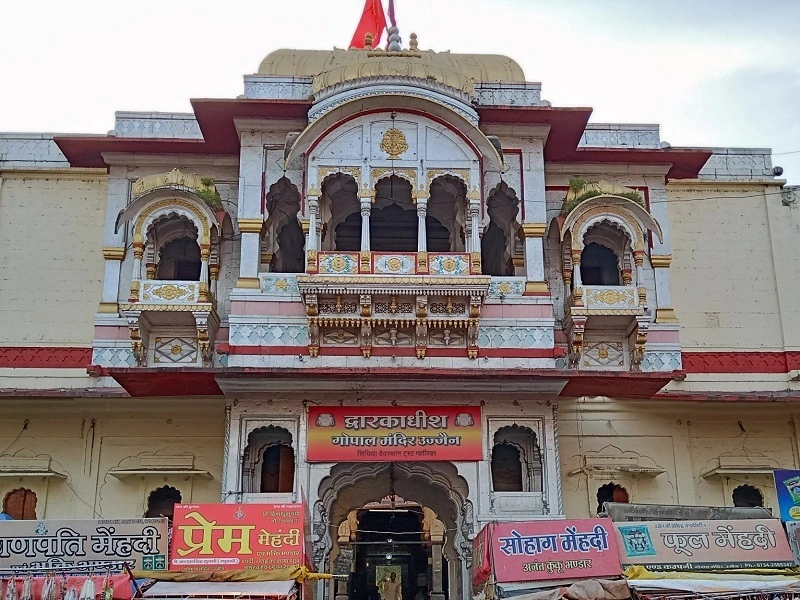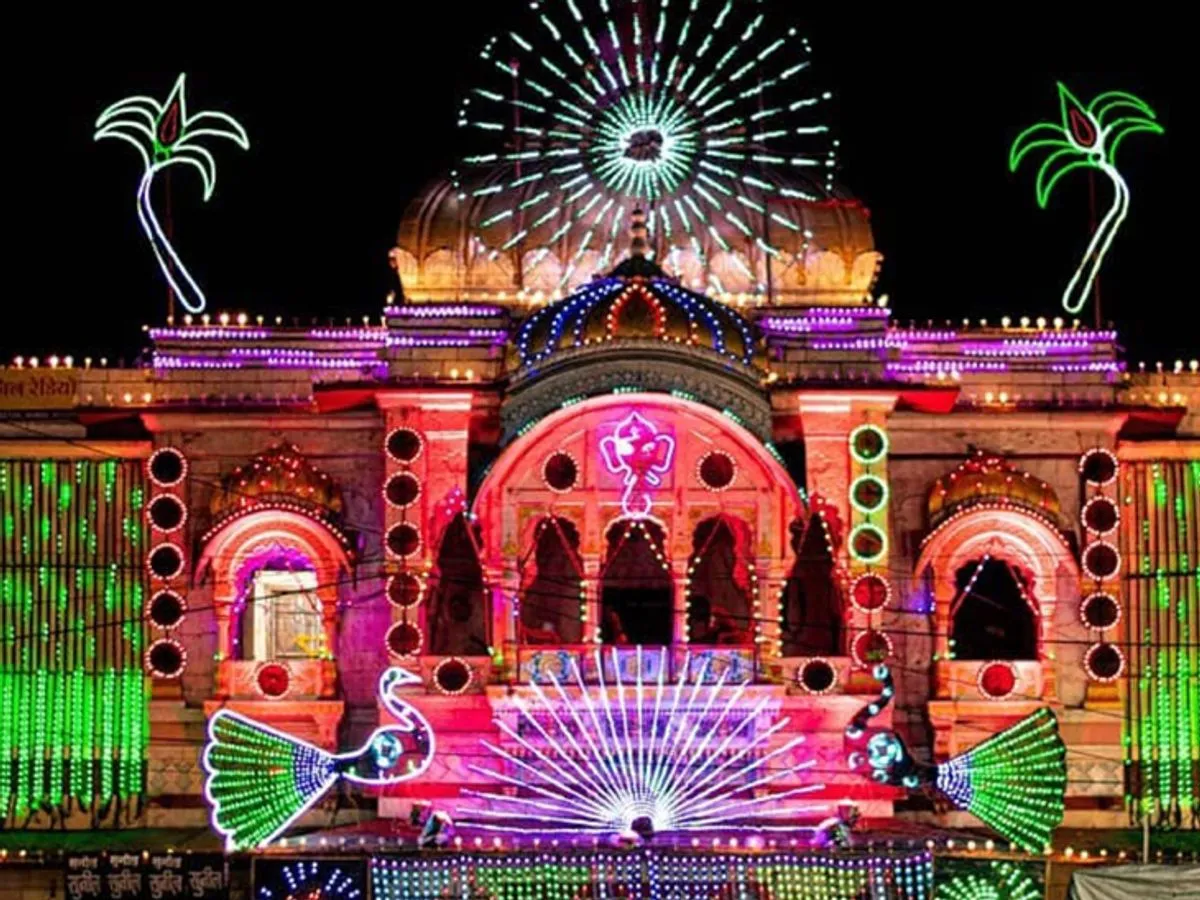
History and Significance
Dating back to the 16th century, Shri Gopal Mandir is a beautiful temple dedicated to Lord Krishna, one of the most beloved Hindu deities. Encompassed by the bustling city
Encompassed by the bustling city, Shri Gopal Mandir offers a tranquil sanctuary for devotees seeking blessings from Lord Krishna. Legend, passed down through generations, narrates the fascinating tale of the temple's origin. King Krishna Chandra, a devout Vaishnava king, dreamt of a celestial being gifting him an idol of Lord Krishna. Upon waking, the king found the very same idol in his palace. He promptly ordered the construction of a temple to house this divine image, and thus, Shri Gopal Mandir came into existence.
The architectural style of the temple reflects a blend of Mughal and Maratha influences. The sanctum sanctorum, the innermost sanctum, is a relatively small structure believed to be the original temple built by King Krishna Chandra. The outer walls and mandapas (halls) were added later, showcasing intricate carvings and a more ornate style. The main entrance gateway is adorned with floral motifs and sculptures depicting scenes from Krishna's life.

Importance:
Shri Gopal Mandir holds special significance for Vaishnava followers who revere Lord Krishna as the supreme being. Krishna, the playful yet wise avatar of Vishnu, embodies love, compassion, and the power of divine play (Leela). Devotees visit the temple to seek blessings for spiritual growth, knowledge, protection, and the removal of obstacles in their lives.
The enchanting flute melodies filling the temple create a truly captivating ambiance. The sound of the flute is believed to be a divine call from Lord Krishna, beckoning his devotees closer to him. The temple attracts a steady stream of pilgrims throughout the year, with a surge in devotees during festivals like Janmashtami, which celebrates Lord Krishna's birth anniversary. Special pujas and cultural programs are organized at the temple during this joyous occasion.
Daily Rituals and Aarti :
The temple follows a daily schedule of pujas and aarti ceremonies. The Mangal Aarti (auspicious morning prayer) is performed at sunrise, followed by other pujas like Shringar Aarti (offering of adornments) and Rajbhog Aarti (offering of midday meal). The Sandhya Aarti (evening prayer) is a beautiful ceremony, with the temple illuminated by diyas (oil lamps) and the chanting of bhajans (devotional songs) filling the air. Devotees can participate in these aarti ceremonies and receive blessings from Lord Krishna.
Offerings and Dress Code :
Devotees typically offer flowers, Tulsi leaves (considered sacred in Vaishnavism), sweets like pedas or ladoos, and ghee (clarified butter) to Lord Krishna. While there is no strict dress code, modest clothing is recommended for visiting the temple.
Timings :
The temple timings might vary depending on the day and season. Generally, it is open from sunrise (around 6:00 AM) to noon (around 12:00 PM) and from 4:00 PM to sunset (around 9:00 PM) [1]. It's advisable to check with the temple authorities beforehand or visit the temple's website for the latest timings of specific pujas and aarti ceremonies.
